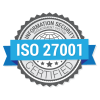Digital transformation is more than just a buzzword; it represents a seismic shift in the way businesses operate and deliver value. But have you ever wondered how businesses made the leap from traditional IT infrastructures to the boundless cloud?
In this article, we offer a historical perspective on traditional IT systems and their foundational role in businesses and how the transition into modern cloud solutions was made.
Traditional IT: Backbone of Yesteryears
For several decades, traditional IT has been at the core of businesses, but it provided an infrastructure deeply rooted in physical servers, painstaking manual processes, and isolated infrastructures.
When companies relied solely on on-premises infrastructure, they owned and managed their own data centers, which not only demanded substantial capital expenditures but also posed challenges in terms of maintenance and energy costs.
The excessive use manual processes needed back then was far from ideal. Rather than the streamlined and automated operations we’re becoming accustomed to today, tasks such as data backup, software installations, and system updates were largely performed manually, and often required dedicated personnel and significant time investments.
There were also consistent concerns over scalability. As businesses grew and their needs evolved, scaling up this kind of infrastructure proved not only costly but also incredibly time-consuming.
Moreover, with the constant evolution of cyber threats, security became a pressing concern. Keeping an on-premises system safe required regular updates to security protocols, which often lagged behind the rapidly changing threat landscape, making businesses vulnerable and further underscoring the limitations of traditional IT systems.
The Cloud Revolution
As the 21st century began, the IT landscape underwent a revolutionary change with the rise of cloud computing. This technology paradigm offered IT resources over the internet that were both scalable and available on-demand, marking a stark contrast to the constraints of traditional systems.
One of the most profound advantages of cloud computing was its cost-efficiency. Businesses no longer needed to make hefty upfront investments; instead, they could leverage a pay-as-you-go model, which translated to significant financial savings.
Furthermore, this new approach endowed companies with unparalleled agility. Resources could be scaled effortlessly, either ramping up or dialing down, based on the ever-changing demands of the business environment.
This dynamism was not just limited to scalability. The cloud era also ushered in a new age of collaboration. Teams, irrespective of their geographical locations, could now collaborate in real-time, breaking down the barriers that once hampered productivity and innovation.
With all that, the tedious manual updates that plagued traditional IT systems became a thing of the past. As technology evolved, cloud platforms, software updates and crucial security patches were deployed automatically, ensuring businesses always operated with the latest and most secure features at their fingertips.
Types of Cloud Solutions
With the evolution of the cloud ecosystem, a multifaceted landscape emerged, catering to various business needs and technological requirements. Among the innovations, Infrastructure as a Service (IaaS) stood out as a game-changer. This model provides businesses with virtualized computing resources over the internet, essentially removing the need for organizations to invest heavily in physical hardware. Pioneers in this space, like Amazon Web Services (AWS) and Microsoft Azure, have set the benchmark for delivering robust, scalable, and reliable infrastructural services.
Following on its heels, Platform as a Service (PaaS) carved out its niche. PaaS doesn’t just offer raw computing power; it provides an entire platform where developers can seamlessly design, run, and oversee their applications without getting bogged down by the complexities of the underlying infrastructure. Google App Engine, for instance, exemplifies this service, empowering developers to focus on code while the platform handles the rest.
But perhaps the most ubiquitous manifestation of cloud services has been Software as a Service (SaaS). This model revolutionized how we interact with software. Instead of cumbersome installations on individual machines, SaaS platforms like Salesforce and Google Workspace provide vital applications directly over the internet, making them accessible anywhere, anytime, and from any device. This trifecta – IaaS, PaaS, and SaaS – underscores the transformative potential and diversity of the modern cloud ecosystem.
Challenges in the Transition
The journey from traditional IT infrastructures to the more modern cloud-based systems, while transformative, comes with its own set of challenges. One of the foremost concerns is the intricacy of data migration. Transferring the immense volumes of data that companies have accumulated over the years to the cloud isn’t just about moving bytes; it’s about ensuring that the transfer is secure, efficient, and doesn’t compromise data integrity.
Beyond the initial migration, there’s the challenge of integration. As companies look to harmonize cloud solutions with their existing on-premises systems, they often encounter compatibility issues, making it difficult to achieve a seamless and efficient operational flow.
In terms of security, the cloud introduces a different landscape. While it offers many advanced security features, it also exposes businesses to a different breed of cyber threats that they must be prepared to counter.
And, perhaps one of the most under-acknowledged challenges in this transition is rooted in human behavior: change management. Introducing new technologies often meets with resistance from employees accustomed to older systems. This resistance can slow down cloud adoption, underscoring the importance of effective communication and training during the transition.
The Future: Hybrid and Multi-Cloud Strategies
In an ever-evolving technological landscape, businesses have come to understand the importance of adaptability. No longer confined to the rigid frameworks of traditional IT models, they are now exploring more nuanced cloud architectures that marry the best of various worlds.
Hybrid cloud strategies have gained traction, blending the vast, accessible resources of public clouds with the controlled, bespoke environments of private clouds. This combination not only ensures that sensitive data remains shielded within private infrastructures but also allows businesses to tap into the scalability and versatility of public cloud platforms when needed.
On a parallel trajectory, the multi-cloud approach has emerged as another strategic pivot. Instead of tethering themselves to a single cloud service provider, businesses are diversifying, harnessing the strengths and specialties of multiple providers. This not only acts as a hedge against potential service disruptions or vendor-specific challenges but also offers a broader palette of tools and solutions to draw from.
Both these strategies—hybrid and multi-cloud—underline a broader theme: the pursuit of optimized costs, bolstered data security, and unmatched operational flexibility in an age where the dynamism of business operations is key to sustained success. The journey from traditional IT to modern cloud solutions is a testament to technology’s transformative power. While challenges exist, the benefits of scalability, agility, and cost savings offered by the cloud are undeniable. As we venture further into the digital age, the cloud will play a pivotal role in shaping the future of enterprise IT, molding its strategies, capabilities, and future potential.


